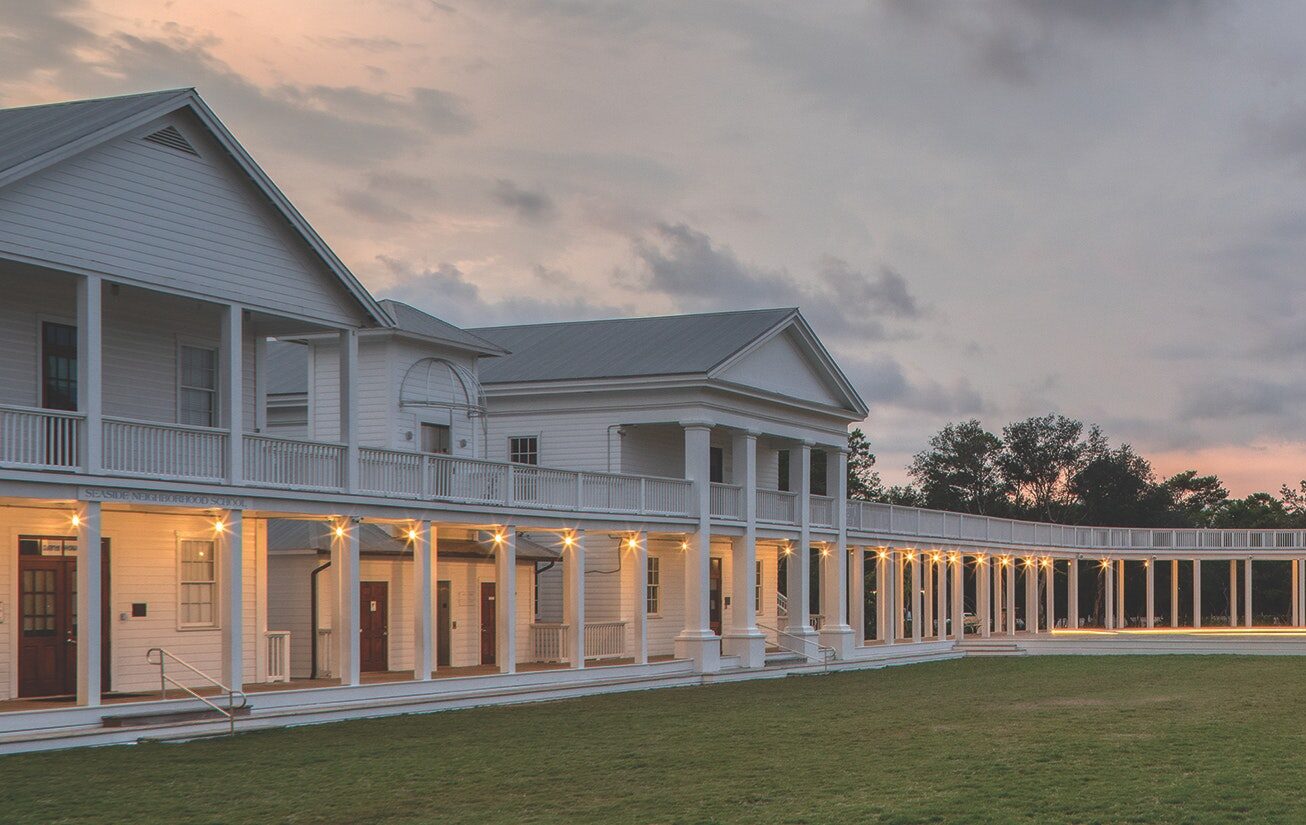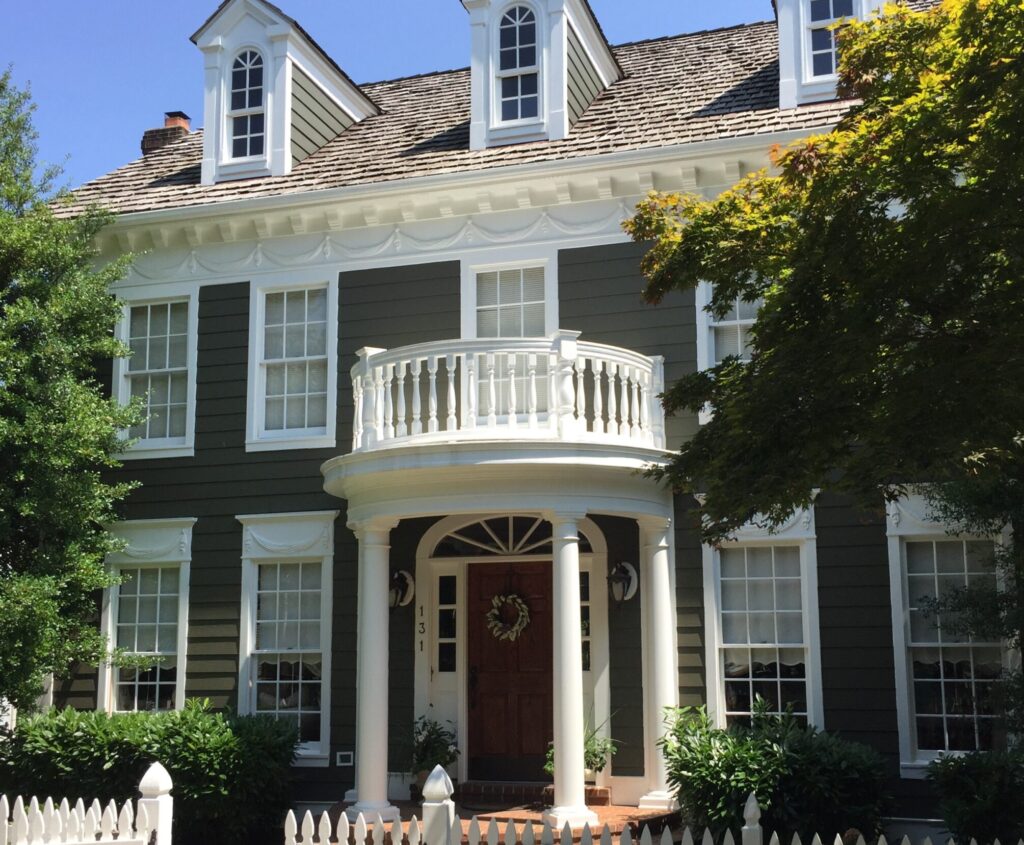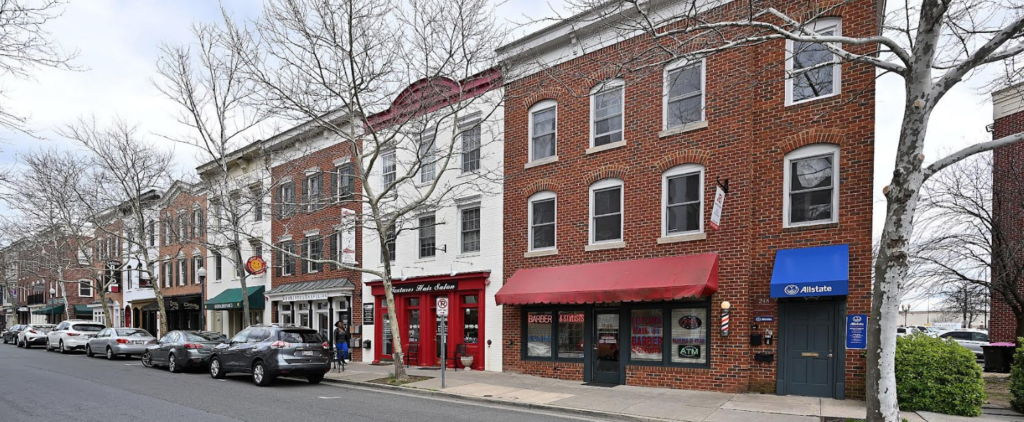Building Better Neighborhoods
New Urbanists have developed pedestrian-scale communities that reflect the movement’s principles, but face financial headwinds.

The first assembly of the Congress for the New Urbanism, commonly known as the CNU, took place in Alexandria, Virginia, 30 years ago. At that time, there was tremendous optimism within its ranks about ending suburban sprawl’s dominance over postwar American urbanization. The hope and expectation was that the pedestrian-scale neighborhood would return to the fore, accompanied by a renewed focus on the core city’s improvement.
In fact, Smart Growth, New Urbanism’s public-policy sidekick, has had a noticeable impact on our cities, nurturing redevelopment along lines very distinct from the anti-pedestrian, “slum-clearance,” and single-use-oriented Urban Renewal catastrophe that unfolded during the 1950s and ’60s. But Smart Growth has failed to make our cities more beautiful, and it has failed to neutralize the centrifugal dynamic underlying sprawl.
From a civic-art perspective, the New Urbanism’s most noteworthy aspiration is to re-establish the high standard of real estate development maintained between the 1890s and the Great Depression, a standard evident in places like Kansas City’s Country Club District, Forest Hill Gardens in Queens, Shaker Heights outside Cleveland, and Beverly Hills in Los Angeles County. The first major New Urbanist essay along these lines, as noted in my previous post for The American Conservative, was the tiny Florida Panhandle community of Seaside, which was planned in 1982. A few of the noteworthy New Urbanist “greenfield projects” that have emerged since Seaside are located in its neighborhood.
But when you make the forty-five minute drive to the Northwest Florida Beaches Airport from Seaside, the real estate development you see, as soon as you’re off the two-lane county road running along the Gulf Coast, is strip malls and other sprawl development.
One man who is not at all happy about this state of affairs is Seaside’s developer, Robert Davis, an emeritus chair of the CNU. A native of Birmingham, Alabama, and a graduate of Antioch College and Harvard Business School, Davis, 79, attributes the New Urbanism’s counter-cultural status mainly to the transformation of real estate finance since the Depression. The epitome of the ancien regime, for Davis, is the Country Club District, a galaxy of fine neighborhoods boasting a population of about 60,000. It was developed over the course of decades by J.C. Nichols (1880-1950), beginning in 1906. The District is best known for its fabulous fourteen-block-long shopping center, Country Club Plaza, where the architecture has a Spanish accent. Nichols astutely erected apartment buildings in the plaza’s vicinity to help ensure a critical mass of customers.
“The big difference between then and now, I think, is the notion of patient capital, patient equity,” Davis says. “J.C. Nichols made lots of friends among bankers and lawyers in Kansas City.” By latter-day standards, he notes, Nichols “launched the Country Club District’s development with very low leverage, a pretty minimal amount of debt, and did not expect short-term profit.”
Nichols said as much in addressing what is now the National Association of Realtors in 1912. “It really does pay to sacrifice immediate sales for the future. It does pay to keep the goodwill of your purchasers, even at a monetary sacrifice, for their cooperation is essential. It really does pay to spend more money on the beautiful things,” he declared.
As a young man Nichols had taken a bicycle tour of Europe and one of the things that struck him was the ethos of permanence informing the layout, architecture, and visual amenities such as fountains and statuary that he encountered in urban settings. He famously applied those lessons in the development of the District and Plaza. But it was not all smooth sailing. As recounted in an informative documentary, Community Builder, the Life and Legacy of J.C. Nichols, Nichols’ income stream was decimated by the 1929 crash. At a meeting with his banker, William T. Kemper of Kansas City’s Commerce Trust Company, Nichols tossed the keys to the Country Club Plaza onto the table. Kemper told him to hold on to them. In the event, Nichols weathered the storm.
One wishes the estimable developer of Kentlands, the early New Urbanist development in Gaithersburg, Maryland, had been as fortunate. (Kentlands was also discussed in my previous post.) Joseph Alfandre hired Seaside’s planners, Andres Duany and Elizabeth Plater-Zyberk (whose firm is now DPZ Co-Design), to lay the community out on the site of the 352-acre Kent family farm, for which he had paid $43 million during the 1980s economic boom. His financial plan was to reduce his debt load by selling a seventy-acre parcel off for $17 million for construction of a conventional suburban shopping mall at the northeast corner of the site.

The planning of Kentlands during a week-long 1988 charette garnered national attention. Houses went on sale in 1990 and sold briskly at the outset, but then the nation’s property market tanked. After mall developer Mel Simon walked away from his $350,000 deposit, Alfandre had to hand the project over to his bankers at the Chevy Chase Savings Bank.
At least Kentlands got built to the DPZ design. The savings bank, which got bought out in 2009, deserves credit for that. Kentlands offers a variety of housing options—single-family, townhouses, apartments—as well as a Main Street lined with live-work buildings for several blocks. The sprawl-style shopping mall that also materialized will eventually be redeveloped to include residences. Homes at Kentlands are said to command a 15 percent premium over those in comparable niches. The Kentlands episode is nevertheless not the sort to fire the imaginations of today’s financiers, who are much more focused on the short term than the likes of William T. Kemper—and, where property development is concerned, much more wedded to single-use development. The same goes for builders, Davis notes. “Conventional housing development is way easier to think about than traditional urbanism, where you have all these moving parts, with a different set of skills for each one”—i.e., housing, retail, office.
Single-use-oriented suburban development got serious traction during the New Deal, which standardized and commoditized housing finance. Established in 1934, the Federal Housing Administration issued property standards for federal mortgage guarantees. Federally guaranteed mortgages issued by savings and loan and other financial institutions could then be bundled into securities marketed by Fannie Mae (launched in 1938) and, later, Freddie Mac. Sale of these securities recycled funds back to mortgage-originating institutions, allowing for the financing of more housing. Legions of residential subdivisions resulted. The same basic model applied to post-war housing financed under the G.I. Bill. New Deal housing initiatives helped revive the nation’s devastated construction industry, and there is no question that they made an improved quality of life possible for millions of Americans.
The fact remains that this commoditized development regime has usually failed to yield communities that improve with age, as the pre-Depression communities the New Urbanists admire have done, and as older historic towns and neighborhoods like Savannah, Charleston, Annapolis, Alexandria, Georgetown, and Beacon Hill have done. And the standard mode of investment analysis taught in our business schools for half a century now has nurtured financial short-termism in real estate development—along with single-use-based sprawl. Because single-use projects have fewer “moving parts,” they are regarded as less risky. More complex mixed-use development is consequently required by this analytical method to have a higher return within an even shorter time frame than conventional development, as noted over twenty years ago by the University of Pennsylvania’s Joseph Gyourko and Witold Rybczynski.

Davis and a fellow New Urbanist pioneer and Harvard Business School graduate, Christopher Leinberger, wrestled with such “discounted cash flow” metrics in a 2000 paper, identifying possible sources of patient capital for New Urbanist communities. In recent telephone conversations, Davis expressed disappointment that pension funds, in particular, “have not stepped up to the plate.” A hefty corporate balance sheet is itself not enough to steer investment to New Urbanist greenfield projects. Starting in the 1990s, The Walt Disney Company built the small town of Celebration (population 11,000) on some 4,900 acres outside of Orlando. Disney’s then-CEO, Michael Eisner, was much impressed with Seaside and Celebration was designed by big-time architects Jacquelin T. Robertson and Robert A.M. Stern as a New Urbanist community that includes lakes and nature trails. Celebration proved financially successful. But it also turned out to be a one-off for Disney, which concluded it could reap more profit from movies like The Lion King, as Duany was informed by a Disney architect.
Unlike Alfandre, Davis—who is allergic to debt—had the great advantage of inheriting the vacant eighty-acre property that became Seaside. He built it very gradually, street by street, selling his first eighth-of-an-acre lots for $15,000 in 1982. He sold the last of the community’s 300 lots in 1999 for $500,000. He emphasizes that reaping the rewards of patient equity in real estate development means having skin in the game for ten or twenty years and counting. (Ten years seems to be the current maximum for mainstream developers.) Nowadays he profits handsomely from the rental of retail space and apartments in Seaside’s town center.
Norton Commons, a 600-acre development northeast of Louisville, also serves as a reminder of the rewards patient capital can reap from a New Urbanist greenfield project when the stars align. Instead of selling their farm, which is bounded by large-lot residential subdivisions and an interstate that is home to conventional shopping centers, the Norton family formed a partnership with New Urbanist developers Charles Osborne, III and David Tomes. The town plan, also the work of DPZ, consists of three neighborhoods. Two of them are denser and more mixed-use, while the third, situated at the north end of the development, is more residential. Streetscapes take their cues from Louisville’s historic neighborhoods. Office and retail space is largely arrayed along Meeting Street, which runs through the denser neighborhoods, dividing along the way so as to frame a variety of open spaces and amenities including a fountain, an oval park, and a market. A quarter of the acreage is given over to park and woodlands and public uses including schools, a church, a YMCA, a fire station, community pools, and a 2,000-seat amphitheater set next to a pond.

Publicly traded national production builders can’t get a handle on the finer-grain urbanism of a project like Norton Commons, says the project’s town architect, New Urbanist veteran Michael Watkins. Norton Commons, he says, “has the largest chapter of the National Association of Home Builders in the country. It is a market of small builders. The [production builders] try, but usually don’t stay long.”
Norton Commons’s developers contend that their project is providing a counterweight to the surrounding single-use development so as to complement and “complete” it—a thought-provoking take on what remains a counter-cultural but remarkably profitable enterprise. In 2003—the year construction got underway—the property's value as agricultural land was a piddling $2.7 million. As of two years ago, when Norton Commons was about 70 percent complete, its assessed value had reached $853 million. Despite the current economic headwinds, construction continues at “a steady 200 houses a year,” Watkins reports. Norton Commons is probably worth $1 billion by now.
Subscribe Today
Get daily emails in your inbox
Gyourko and Rybczynski observed back in 2001 that the “discounted cash flow” metric had proved very sound on the whole. No doubt it has contributed to the extraordinary post-war increase in American wealth, which has left the nation several times richer than it was when places like Country Club Plaza were built. But if that metric has helped make our nation richer, it has also helped make our architecture and urbanism poorer. The United States is the first pre-eminent power in world history to witness a spectacular degeneration of its architectural culture.
And the crisis brought on by the 2007-2009 subprime mortgage meltdown, fueled by the infamous instruments known as CDOs, or collateralized debt obligations, highlighted the perils of what Davis calls “the financialization of everything in America.” Half of his Harvard Business School classmates, he says, went to work for corporations that “make things” like IBM and General Motors. “Now they almost all head for Wall Street.”
One might wish a few of them would head out to Louisville for a good look at Norton Commons.
Comments